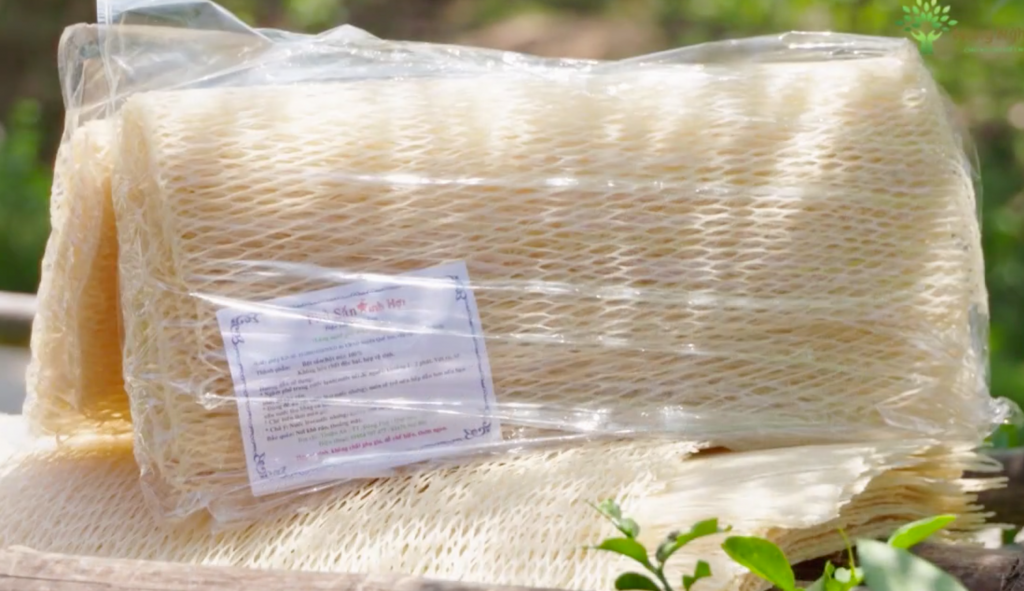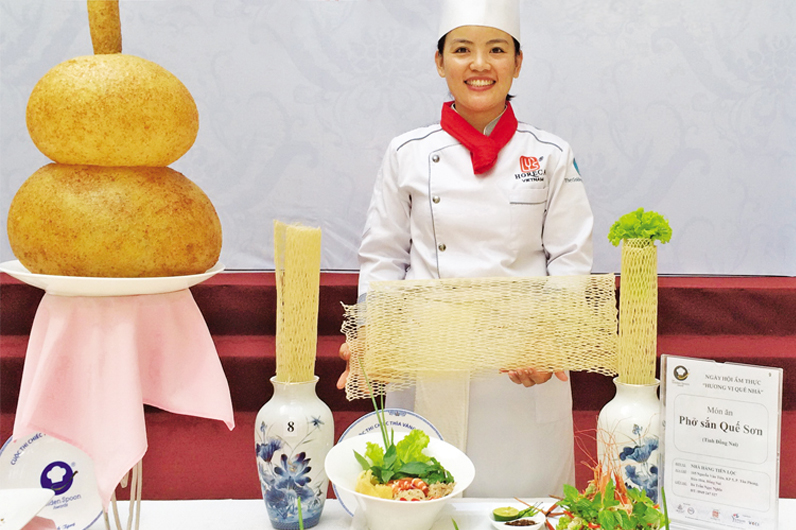Unlike other substances which found in other plant food, cassava is gluten free. Gluten is protein which usually found in wheat, barley, oats and rye and can cause allegy to some people. Person with celiac disease (abnormality or damage of small intestine which can not tolerate gluten) can consume starch or flour from cassava because is free from gluten. So they still can enjoy some cake made from cassava and other savoury dishes which need flour to thicken the gravy

Let’s get some foodie knowledge…
Cassava is the long, brown, tapered root vegetable that you’ll find hiding near the sweet potatoes in your local grocer or supermarket. If you’re anything like me you may have looked at it longingly on many occasions, considering taking one home, if only you knew what to do with it. I always felt it will be like buying some flat-pack furniture; once I’m home the excitement of my new purchase will just give way to confusion over how I’m supposed to use it.
In an effort to solve the riddle of the cassava and reveal what character lies beneath that dark, tough exterior, I’ve put together an exhaustive rundown of what cassava is and how it’s eaten around the world. If you’ve ever wondered whether these earthy brown tubers are used in sweet dishes, savoury, or both; if it’s hard or soft and if it’s used in Indian, African or South American food, then this list is just for you…
1. Cassava has lots of names including mandioca (Brazil), aipim (Brazil), Brazilian arrowroot, tapioca, yuca, singkong (Thailand), mogo (Africa), balinghoy or kamoteng kahoy (Philippines) and many more.
2. The cassava plant has large green leaves which are edible, however the long brown vegetable that we eat is the ‘tuber’, which grows underground.
3. Cassava can spoil quickly after harvest, some varieties will go off in just a few days, so most of the cassava on sale in the UK is coated in wax to preserve it.
4. To check your cassava just trim the ends off and see what colour it is inside. Good cassava is white, bad cassava is black.
5. Never eat cassava raw! It contains harmful toxins, concentrated in the outer skin. Peel it thoroughly, removing all of the brown skin and cook it appropriately.

6. Tapioca flour is dried, ground cassava root, it’s completely gluten free and works as a great thickening agent due to its high starch levels.
7. The pearls in bubble tea are made from moistened tapioca (cassava) flour by forcing it through a sieve.
8. Cassava makes really good chips! Peel the cassava, slice it into large sections, boil until soft, break into chip sized pieces then deep fry.
9. Fermented cassava, known as ‘tape’, is popular in Indonesia and is used to make sweets and desserts.
10. A popular Brazilian street food is a two-ingredient cassava pancake that is completely gluten free and low fat. Cassava (Tapioca) flour is mixed with water then pushed through a sieve into a dry, hot pan to make the pancakes. It’s served with sweet or savoury fillings, just google ‘Brazilian Tapioca’ to find out how.
11. Bill and Melinda Gates are investing in the creation of a type of cassava with enhanced nutritional qualities to help developing countries.
12. In Bermuda, cassava pie is a rich and sweet traditional dish served at Christmas made from layers of cassava, chicken, sugar, butter, condensed milk, eggs and spices.
13. In Africa, Cassava is soaked, grated, then sun dried, before being pressed through a sieve and finally dried once more to create ‘Gari’, which is similar to couscous.
14. One of the most popular Indian cassava dishes is Chilli Mogo or Pili Pili Mogo, which are both spicy vegetable curry dishes.
15. A popular African breakfast dish is Gari Foto, which is dried cassava fried with onions, tomatoes and served with fried eggs. Freshly fried cassava crisps are a popular African street food.
Armed with this knowledge you can go forth to proudly pick up one of these lengthy root vegetables and add it to your trolley with the laissez faire confidence of a seasoned cassava consumer.
